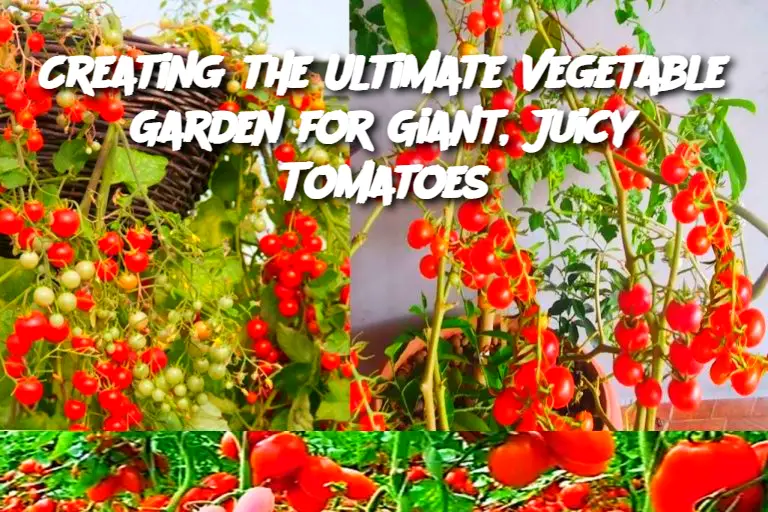ADVERTISEMENT
Introduction:
A vegetable garden can be a delightful addition to your home, and what better way to enjoy fresh produce than by growing your own tomatoes? Tomatoes are a staple in many households, loved for their versatility and rich flavor. However, if you want to grow huge, red, and juicy tomatoes, it’s essential to know the right way to care for them. Growing tomatoes isn’t just about planting a seed and hoping for the best—it requires attention, the right conditions, and a little bit of patience. In this guide, we’ll explore how to cultivate the perfect tomato plants for an abundant harvest that will delight your taste buds all season long.
Ingredients:
While you don’t need traditional ingredients for planting tomatoes, these elements are essential for success:
Tomato Seeds or Seedlings: Choose a variety suited for your climate (e.g., Roma, Beefsteak, or Cherry).
Quality Soil: Well-drained soil enriched with organic matter ensures healthy growth.
Fertilizer: A balanced fertilizer (preferably organic) to promote steady growth.
Compost: Rich compost helps maintain nutrient levels.
Mulch: Mulch prevents weed growth and keeps soil moisture consistent.
Tomato Cages or Stakes: These will support the growing plants and keep them upright.
Water: Consistent watering is key for a healthy plant and fruit.
Instructions:
Prepare the Soil:
Begin by selecting a sunny spot for your garden, as tomatoes need at least 6-8 hours of sunlight per day. Prepare the soil by mixing in organic compost and ensuring it's loose and well-drained. Tomatoes thrive in slightly acidic soil with a pH between 6.0 and 6.8.
Planting the Seeds or Seedlings:
If starting from seed, plant them indoors 6-8 weeks before the last expected frost. Once the seedlings are around 6 inches tall and the outdoor soil temperature is consistently above 60°F (15°C), transplant them into your garden. If you are using young tomato plants, ensure there is enough space between each plant—about 24 to 36 inches apart for better airflow.
Watering and Fertilizing:
Water the plants regularly, aiming to keep the soil evenly moist. However, avoid overwatering, as it can lead to root rot. Use a balanced fertilizer to feed your plants, and be sure to follow the manufacturer’s recommendations for dosage and timing. Fertilize every two weeks throughout the growing season.
Supporting the Plants:
As your tomato plants grow, use tomato cages or stakes to support them. This will keep the heavy fruit off the ground and help prevent diseases, which can be caused by fruit coming into contact with wet soil.
Pruning:
Prune your plants regularly to remove dead leaves and any unnecessary side shoots (called "suckers"). This helps the plant focus its energy on producing fruit. Aim to trim the lower leaves to improve airflow around the base of the plant.
Harvesting:
Tomatoes should be picked when they are fully ripe, with a deep red color and a slight softness. Be sure to handle them gently to avoid bruising. Harvesting at the right time ensures the best flavor.
Serving and Storage Tips:
Serving: Fresh tomatoes can be enjoyed in a variety of dishes, such as salads, sandwiches, sauces, and salsas. They also make a great addition to a summer bruschetta or a hearty pasta sauce.
Storage: Fresh tomatoes are best eaten within a week of picking, but if you need to store them longer, consider freezing them. To do so, blanch them in boiling water for a minute, peel the skin, and store the fruit in airtight bags in the freezer. You can also preserve them by canning or turning them into tomato sauce or paste.
Variations:
ADVERTISEMENT
